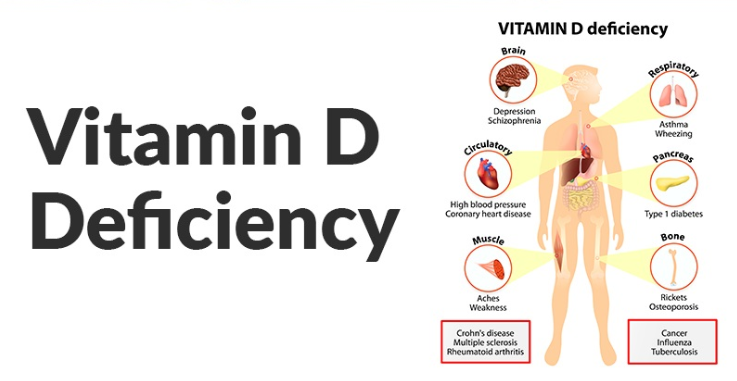Introduction
Vitamin D is vital for bone health, immune support, and overall well-being. Yet vitamin D deficiency remains common—from newborns to seniors. Renowned researcher Dr. Valter Longo has shed light on how deficiency patterns differ by age and how to address them safely. In this comprehensive guide, we’ll explain the causes, risks, and signs of low vitamin D for each life stage. You’ll also learn Dr. Longo’s age-specific tips for maintaining healthy D levels through diet, sun exposure, and proper supplementation.
1. Why Vitamin D Matters
Vitamin D:
- Aids Calcium Absorption: Essential for strong bones.
- Supports Immunity: Helps fight infections.
- Regulates Mood: Linked to lower depression risk.
- Promotes Muscle Function: Reduces falls in older adults.
Too little vitamin D can lead to rickets in children, osteoporosis in adults, and greater illness risk at any age.
2. Dr. Valter Longo’s Expertise on Vitamin D
Dr. Valter Longo is a leading authority on aging and nutrition. His research shows that maintaining optimal vitamin D levels can:
- Slow markers of biological aging
- Improve muscle strength and balance
- Enhance immune resilience
- Support healthy weight management
Dr. Longo emphasizes a balanced approach: safe sun exposure, D-rich foods, and supplements only when needed.
3. Infants and Toddlers (0–3 Years)
Why They’re at Risk
- Limited Sun Exposure: Infants are often kept out of direct sun to protect delicate skin.
- Breast Milk Limitations: Breast milk alone may not supply enough vitamin D.
Recommended Intake
- 600 IU/day: The American Academy of Pediatrics recommends 400–600 IU of vitamin D3 daily.
Signs of Deficiency
- Poor growth
- Delayed sitting or standing
- Soft or bowed bones (rickets)
Dr. Longo’s Tips
- Vitamin D Drops: Pediatric vitamin D drops for breastfed babies.
- Fortified Formula: Choose formula with added vitamin D.
- Gentle Sunlight: Brief sun exposure (5–10 minutes) on hands and face.
4. Children and Adolescents (4–18 Years)
Unique Challenges
- Indoor Activities: School and screen time limit outdoor play.
- Growth Spurts: Rapid bone growth increases D needs.
Recommended Intake
- 600–1,000 IU/day: Depending on sun exposure and diet.
Symptoms to Watch For
- Frequent colds
- Fatigue or low energy
- Muscle aches
Dr. Longo’s Recommendations
- Encourage Play Outside: 15–20 minutes of midday sun, with sunscreen on sensitive areas.
- Diet Boost: Include vitamin D-rich foods like fatty fish (salmon, sardines), fortified milk, and eggs.
- Supplement When Needed: A daily chewable or liquid supplement in winter months.
5. Adults (19–64 Years)
Why Deficiency Persists
- Busy Lifestyles: Office jobs reduce sun exposure.
- Dietary Gaps: Few natural D-rich foods in standard diets.
Recommended Intake
- 800–1,000 IU/day: Higher end for those with limited sun.
Common Signs
- Bone pain or lower back pain
- Mood swings or mild depression
- Slow wound healing
Dr. Longo’s Practical Advice
- Routine Blood Tests: Check 25(OH)D levels annually.
- Safe Sun Habits: 20 minutes of sun on arms and legs, 3–4 times weekly, avoiding peak UV hours.
- Supplementation: 1,000 IU D3 capsule daily if blood levels fall below 30 ng/mL.
6. Older Adults (65+ Years)
Increased Vulnerability
- Less Efficient Skin Conversion: Aging skin makes vitamin D less efficiently.
- Less Outdoor Activity: Mobility issues often limit sun exposure.
Recommended Intake
- 1,000–2,000 IU/day: Some experts suggest up to 2,000 IU for bone health.
Red Flags
- Frequent falls or fractures
- Muscle weakness
- Cognitive decline
Dr. Longo’s Senior Strategy
- Higher Supplement Doses: Up to 2,000 IU D3 daily, under medical supervision.
- Combined Calcium and D: Ensures both nutrients work together for bone strength.
- Light–Exercise Outdoors: Gentle walks midday improve D levels and mobility.
7. Understanding Vitamin D Blood Levels
- Deficient: Under 20 ng/mL
- Insufficient: 20–30 ng/mL
- Sufficient: 30–60 ng/mL
- High (Avoid): Above 100 ng/mL
Regular lab checks guide safe supplementation and prevent toxicity.
8. Safe Supplementation Practices
- Choose D3 (Cholecalciferol): More effective than D2.
- Avoid Excess: Stay under 4,000 IU/day unless directed by a doctor.
- Take with Food: Fat helps absorption—best with the day’s largest meal.
- Split Doses: If high dosage is needed, split into two smaller doses to improve use.
Dr. Longo warns against megadoses without testing to avoid hypercalcemia (high calcium levels).
9. Combining Vitamin D with Other Interventions
9.1 Diet Synergy
- Magnesium: Supports D activation—include nuts, seeds, and whole grains.
- Vitamin K2: Directs calcium to bones—find in fermented foods and dairy.
9.2 Lifestyle Habits
- Weight-Bearing Exercise: Strengthens bones and muscles—walking, dancing, or resistance bands.
- Stress Management: Chronic stress can lower D levels—practice meditation or gentle yoga.
A holistic approach multiplies vitamin D’s benefits across all ages.
10. Global and Seasonal Considerations
- Latitude Effects: People in northern latitudes need more supplementation in winter.
- Air Pollution: Urban smog reduces UVB radiation—Lahore or Delhi residents should rely more on supplements.
- Cultural Attire: Full-coverage clothing may block sun—adjust intake accordingly.
Tailoring strategies to your location and lifestyle ensures consistent D levels year-round.
Conclusion
Vitamin D deficiency affects every age group—from infants at risk of rickets to seniors prone to fractures and cognitive decline. Guided by Dr. Valter Longo’s research, we understand that safe sun exposure, D3 supplementation, and a balanced diet rich in D-supportive nutrients can keep levels within the optimal 30–60 ng/mL range. Regular blood tests, age-appropriate dosing (400–2,000 IU/day), and pairing D with magnesium and K2 ensure you harness vitamin D’s full benefits. By tailoring your approach to life stage, lifestyle, and location, you can boost bone health, immunity, mood, and longevity. Start today: get tested, adjust your habits, and embrace a proactive plan for vitamin D wellness across all ages.










